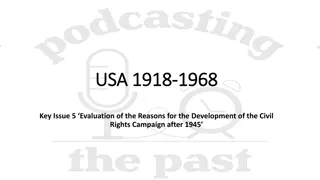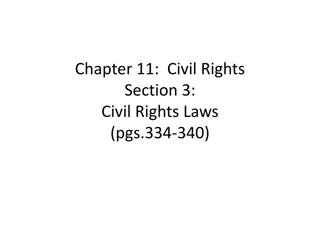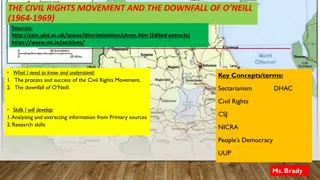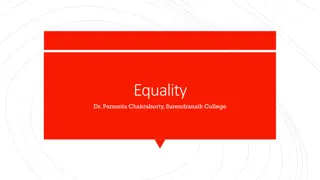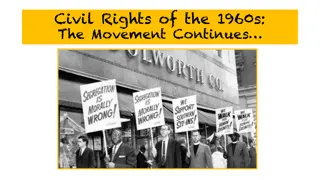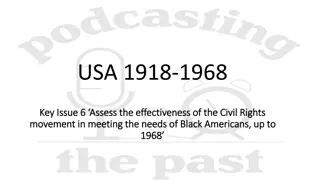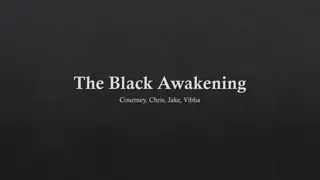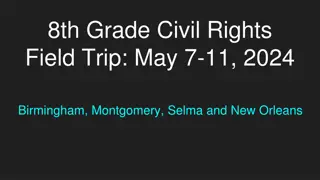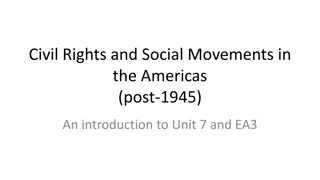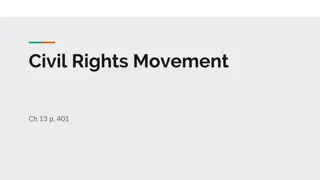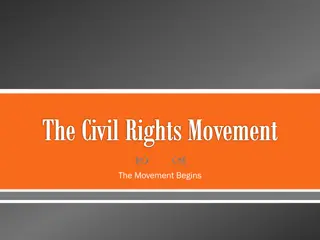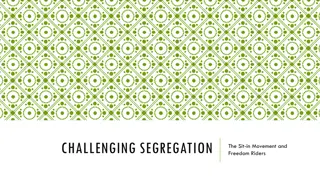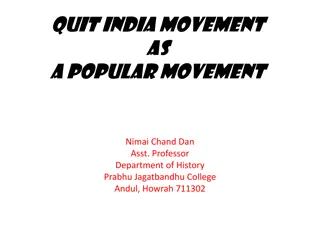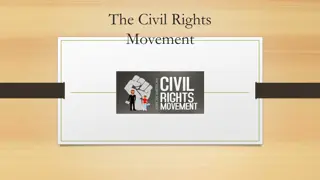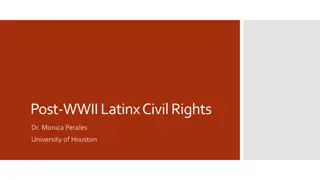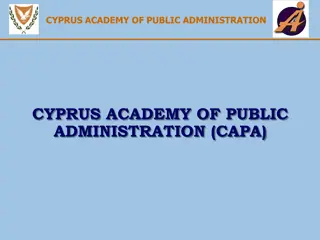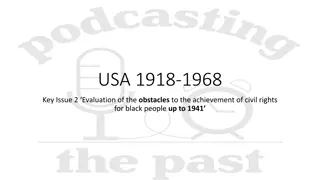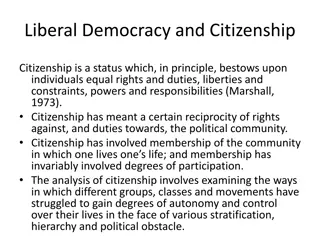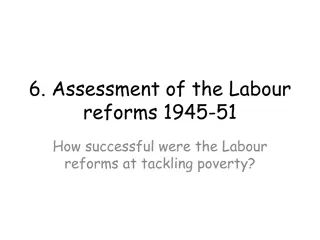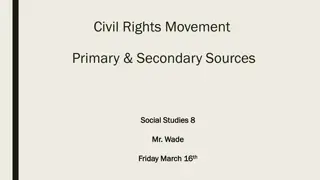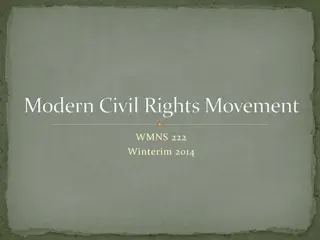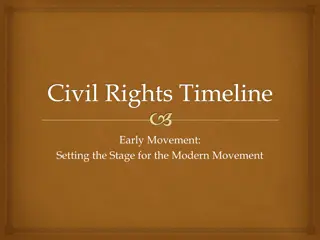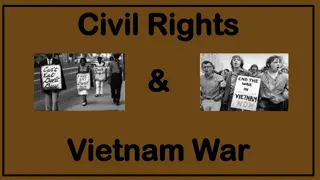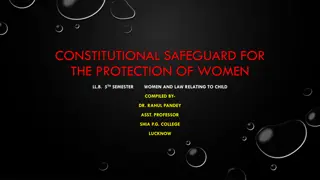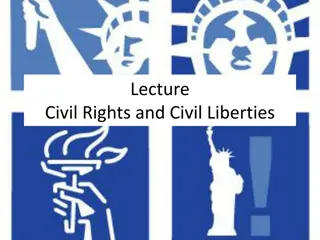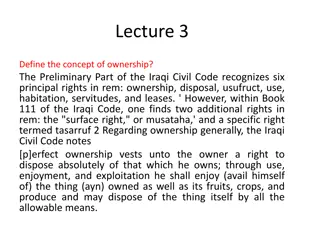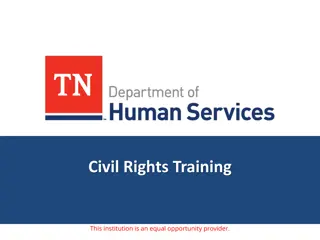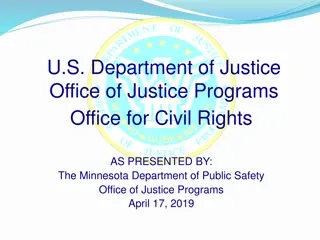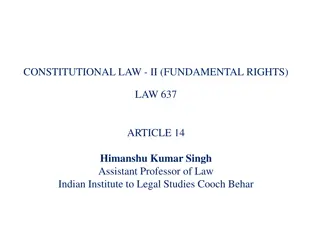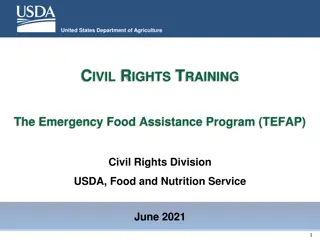The Civil Rights Movement 1945-1975: Struggle for Equality and Justice
Explore the pivotal events and key figures of the Civil Rights Movement from 1945 to 1975, including the landmark Brown v. Board of Education case, the Montgomery Bus Boycott led by Rosa Parks and Martin Luther King Jr., and the fight against segregation and discrimination that reshaped American society.
Download Presentation

Please find below an Image/Link to download the presentation.
The content on the website is provided AS IS for your information and personal use only. It may not be sold, licensed, or shared on other websites without obtaining consent from the author. Download presentation by click this link. If you encounter any issues during the download, it is possible that the publisher has removed the file from their server.
E N D
Presentation Transcript
Chapter 14 The Civil Rights Movement 1945-1975
Early Demands for Equality SECTION 1
Students will be able to: Vocabulary Define the two types of segregation and discuss the early successes of the Civil Rights Movement. Discuss the significance of the Brown decision and describe reaction to the decision. Describe the conflict in Little Rock, Arkansas, and define the Civil Rights Act of 1957. Describe the Montgomery bus boycott and discuss the roles of Rosa Parks and Martin Luther King. De jure segregation De facto segregation Jackie Robinson CORE Brown v. Board of Education Thurgood Marshall Earl Warren Little Rock Nine Civil Rights Act of 1957 Rosa Parks Montgomery Bus Boycott Martin Luther King, Jr. SCLC Objectives (View Abraham, Martin, and John)
View Abraham, Martin, and John "Abraham, Martin & John" is a 1968 song written by Dick Holler and first recorded by Dion . It is a tribute to the memories of icons of social change, Abraham Lincoln Martin Luther King, Jr., John F. Kennedy, and Robert F. Kennedy. It was written as a response to the assassinations of King and the younger Kennedy in April and June 1968.
Why it Matters What was the civil rights movement?
Segregation Divides America What did African Americans have a long history of?
Jim Crow Laws Limit African Americans What did Jim Crow laws enforce? Define de jure segregation. Give examples of areas in public life where segregation extended.
Segregation Prevails Around the Nation Define de facto segregation. Compared to whites, what did Black Americans have higher and lower rates of?
The Civil Rights Movement Grows What set the stage for the modern civil rights movement? What did James Farmer form? Who was Jackie Robinson? What did Truman order in 1948?
Brown v. Board of Education During the 1950s, what branch of government did the NAACP turn to to attain its goals?
The NAACP Challenges Segregation Who was Thurgood Marshall? In the Sweatt v. Painter, what did the Supreme Court rule?
The Court Strikes Down Segregated Schools In the Brown case, what concept did the NAACP challenge? In Hernandez v. Texas, what did the Supreme Court end?
Reaction to Brown Why was the Brown decision so controversial? What did Southerners have no intention of doing? What organization staged a revival?
Federal and State Governments Clash What did state and local governments resist?
A Conflict Erupts in Little Rock How many kids and what did the crowd do? How did President Eisenhower react?
Congress Passes a Civil Rights Law What did the Civil Rights Act of 1957 establish? What did it have the power to investigate? What did it have greater power to protect?
The Montgomery Bus Boycott Who was Rosa Parks and what did she refuse to give up?
Rosa Parks Launches a Movement What did people organize in Montgomery and what did they refuse to do?
Martin Luther King Urges Nonviolence Who was Dr. Martin Luther King and what did he urge?
Ministers Form the SCLC What was the SCLC and what did it advocate?




